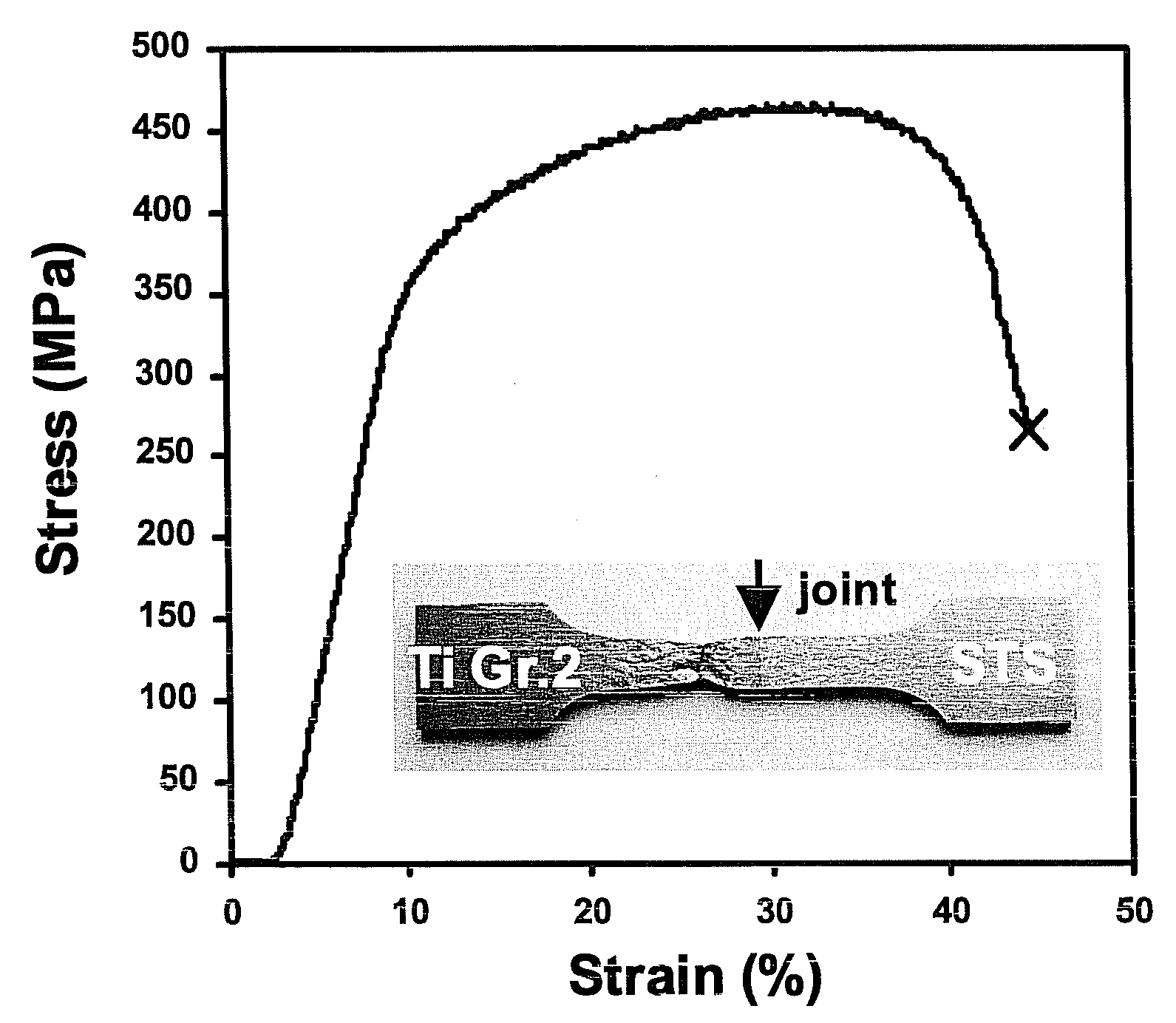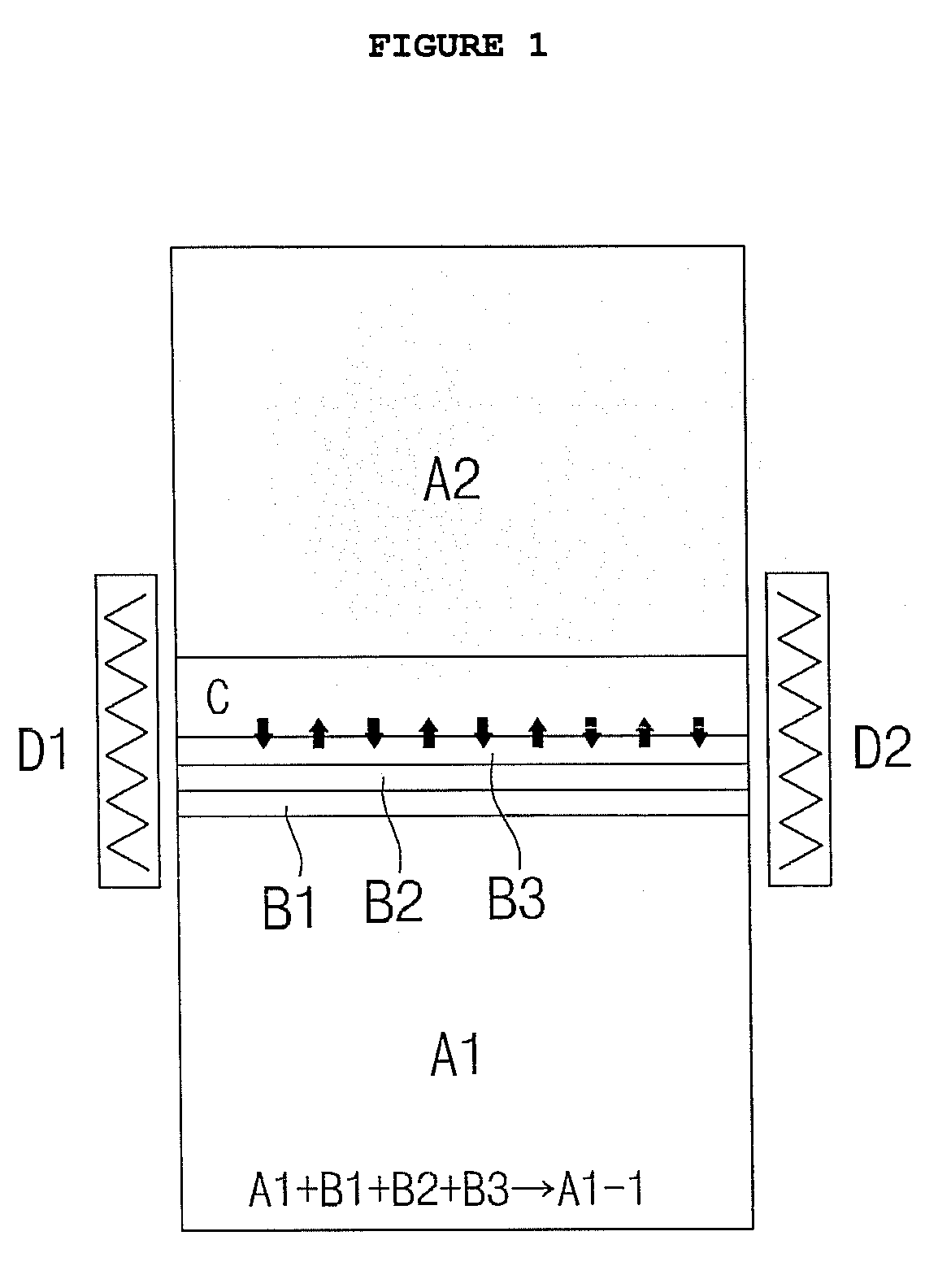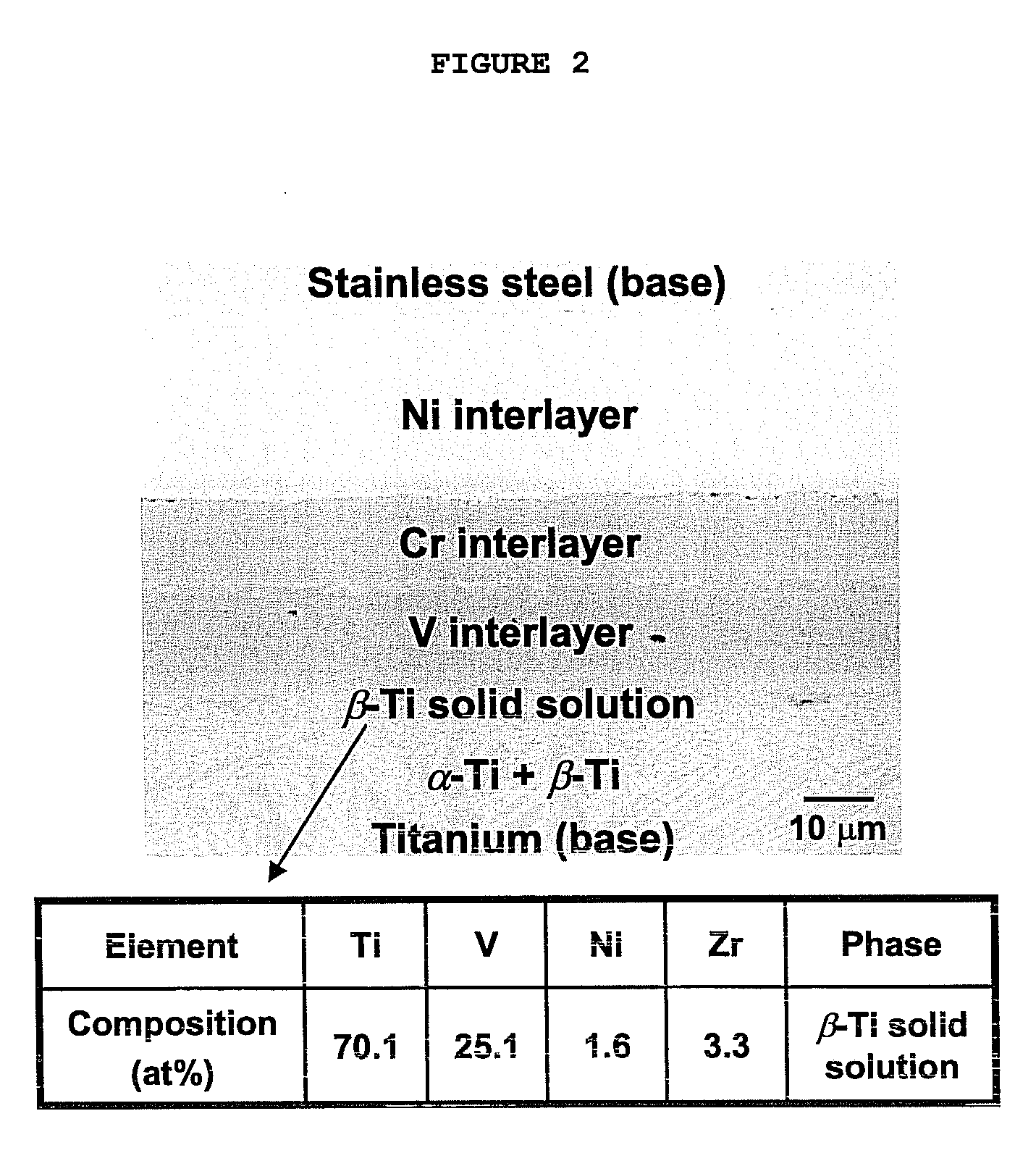JOINING METHOD BETWEEN Fe-BASED STEELS AND Ti/Ti-BASED ALLOYS HAVING JOINT STRENGTH HIGHER THAN THOSE OF BASE METALS BY USING INTERLAYERS AND THE JOINTS PRODUCED USING THE METHOD
a technology of ti/ti-based alloys and fe-based steels, which is applied in the direction of metal layered products, metal-working equipment, non-electric welding apparatus, etc., can solve the problems of stress corrosion cracking, material defects, and deformation of the joint portion, and achieve the effect of improving the joint strength of the joint portion
- Summary
- Abstract
- Description
- Claims
- Application Information
AI Technical Summary
Benefits of technology
Problems solved by technology
Method used
Image
Examples
example 1
[0045]An interlayer was formed by sequentially coating nickel, chrome and vanadium layers on a super stainless steel. A ribbon with a thickness of 40 μm, which is consisted of 58 atom % of titanium, 16 atom % of zirconium and 26 atom % of nickel, was interposed as a titanium-based filler alloy between the vanadium interlayer and pure titanium (Gr. 2), and infrared brazing was then performed while increasing a temperature at a speed of 100° C. / min until the temperature becomes 930° C. under an argon atmosphere. After maintaining the temperature at 930° C. for 10 minutes, cooling was performed at a cooling speed of average 50° C. / min, thereby producing an sample having titanium and super stainless steel joined together.
[0046]FIG. 2 shows a photograph showing a micro-structure of a joint portion in the joined sample.
[0047]Referring to FIG. 2, a Ni—Cr—V interlayer is uniformly formed as a diffusion control layer on a super stainless steel base metal. At a joint portion between the Ni—Cr...
example 2
[0048]A sample having titanium and super stainless steel joined together was produced using the same method as that in Example 1, except that a molybdenum layer instead of the vanadium layer is used in the interlayer.
example 3
[0049]A sample having titanium and super stainless steel joined together was produced using the same method as that in Example 1, except that a tungsten layer instead of the vanadium layer is used in the interlayer.
PUM
| Property | Measurement | Unit |
|---|---|---|
| Strength | aaaaa | aaaaa |
Abstract
Description
Claims
Application Information
 Login to View More
Login to View More - R&D
- Intellectual Property
- Life Sciences
- Materials
- Tech Scout
- Unparalleled Data Quality
- Higher Quality Content
- 60% Fewer Hallucinations
Browse by: Latest US Patents, China's latest patents, Technical Efficacy Thesaurus, Application Domain, Technology Topic, Popular Technical Reports.
© 2025 PatSnap. All rights reserved.Legal|Privacy policy|Modern Slavery Act Transparency Statement|Sitemap|About US| Contact US: help@patsnap.com



